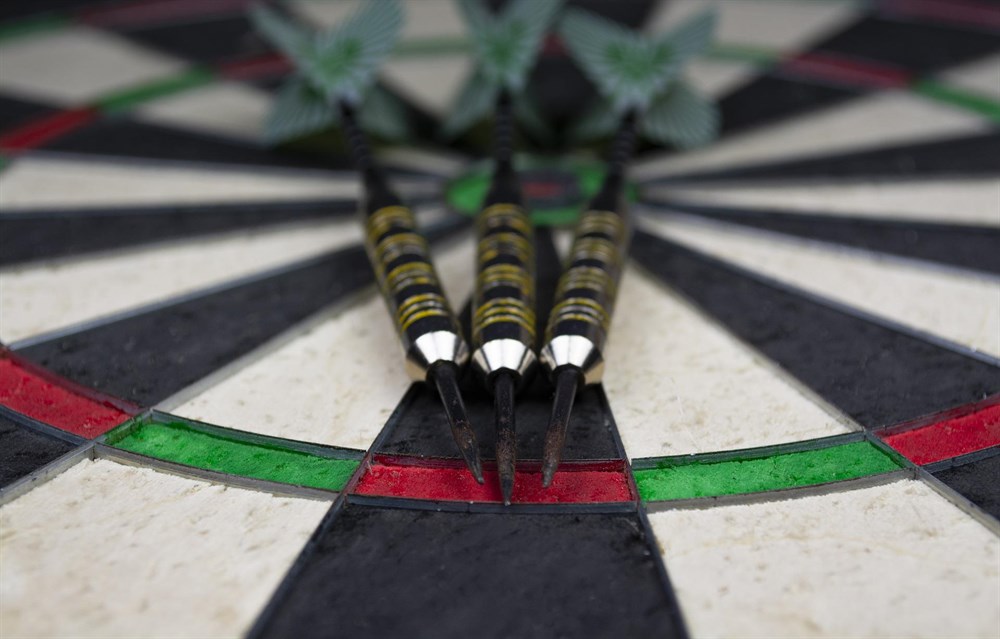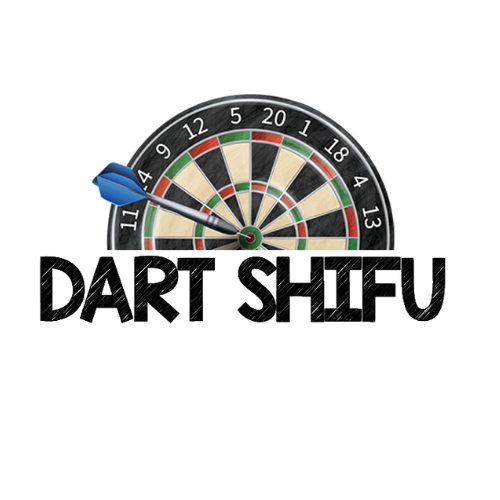In darts, sets refer to a predetermined number of legs that players need to win to secure a match, typically best of 3 or best of 5. Legs are individual rounds within a set where players take turns to throw three darts and score points.
Darts is a popular pub game that requires precision and accuracy. The game is typically played between two players or teams who take turns throwing darts at a circular target board. A set comprises of a predetermined number of legs, and the player or team that wins the majority of legs in a set secures the set.
In turn, the player or team that secures the majority of sets wins the match. Understanding the concept of sets and legs in darts is essential for anyone who wants to enjoy and excel in this classic game.

Credit: darthelp.com
What Are Sets And Legs In Darts
When it comes to the game of darts, understanding the terminology is crucial for players and enthusiasts alike. One of the fundamental concepts in darts is the understanding of sets and legs. In this section, we will delve into the definition of sets and legs in darts, their importance in the scoring system, and how they impact the game.
Definition Of Sets And Legs
Sets and legs are key components of the scoring system in the game of darts. Let’s break down the definitions of sets and legs:
- Sets: In darts, a set is a series of legs. A match typically consists of a predetermined number of sets, with each set comprising a specific number of legs.
- Legs: A leg refers to a single game within a set. Players compete to win a set number of legs to secure victory in a set.
Importance In Darts Scoring System
Sets and legs play a crucial role in the scoring system of darts, influencing the outcome of the game. Understanding their significance is essential for players and spectators alike. Here’s why they are important:
- Scoring Progression: Sets and legs provide a clear framework for tracking the progression of a match. This structured approach enhances the overall experience for players and audience members.
- Strategic Element: The concept of sets and legs introduces strategic elements into the game, as players must adapt their tactics to win individual legs and ultimately secure sets.
- Determining the Winner: By dividing the match into sets and legs, the scoring system offers a definitive method for determining the overall winner, adding a layer of excitement to the game.
Scoring Mechanics For Sets
Scoring mechanics play a crucial role in the game of darts, particularly in sets. Understanding how scoring works can significantly impact a player’s strategy and overall performance. Let’s delve into the scoring mechanics for sets in darts and explore the rules, objectives, impact on game progression, and common strategies.
Rules And Objectives
In a darts set, the primary objective is to accumulate points by hitting specific targets on the dartboard. Players take turns throwing three darts each, aiming to score the highest possible points with their throws. The scoring is based on the numbered sections of the dartboard, with different segments carrying varying point values.
Impact On Game Progression
The scoring mechanics for sets directly influence the pace and outcome of the game. As players strive to achieve their scoring objectives, the accumulation of points determines their progress within the set. Successful scoring can lead to winning legs and ultimately, the entire set, impacting the overall result of the match.
Common Strategies
- Targeting High-Value Areas: Players often strategize to aim for the treble and double sections of the dartboard to maximize their scoring potential.
- Finishing Strong: Effective set scoring includes strategically planning the final throws to reach an optimal score for winning the set or forcing a tiebreak.
- Maintaining Consistency: Consistent scoring throughout the set is a key strategy to stay competitive and exert pressure on opponents.
Scoring Mechanics For Legs
Darts is a game that involves scoring points by hitting specific areas on a dartboard. However, in a match of darts, the scoring mechanics for legs play a crucial role in determining the outcome. Understanding the rules, objectives, impact on the match outcome, and player strategies related to scoring mechanics is essential for any darts enthusiast.
Rules And Objectives
In darts, a leg refers to a single game within a match. The main objective in a leg is to reach the specified target score, usually set at 501 or 301, and be the first player to accomplish this goal. Every player takes turns to throw three darts, aiming to score as high as possible and reduce their remaining points to zero.
Impact On Overall Match Outcome
The scoring mechanics for legs significantly affect the overall match outcome. Winning a higher number of legs contributes to winning the match. Therefore, players need to strategically approach each leg to maximize their chances of winning and securing victory in the entire match.
Player Strategies
Players employ various strategies to excel in the scoring mechanics for legs. These strategies include focusing on scoring big in the early rounds to reduce the remaining points swiftly, aiming for specific combinations of numbers, and capitalizing on opportunities presented by their opponents’ scores.
Utilization In Tournament Settings
When it comes to competitive darts tournaments, understanding how sets and legs determine match winners, affect player performance and stamina, and influence tournament dynamics is crucial. The utilization of sets and legs plays a significant role in shaping the outcome of darts matches at the tournament level, impacting players, strategies, and overall competition dynamics. Let’s dive into the important aspects of sets and legs in tournament settings.
How Sets And Legs Determine Match Winners
Sets and legs function as a framework for determining match winners in darts tournaments. In a typical scenario, a match consists of a predetermined number of sets, and each set comprises a specific number of legs. The player who wins the majority of sets or legs within a set emerges as the match winner. This structure emphasizes consistency and adaptability, as players must maintain performance across multiple sets to secure victory.
Effect On Player Performance And Stamina
The utilization of sets and legs exerts a profound impact on player performance and stamina during tournaments. With the need to maintain focus and form across multiple sets and legs, players are challenged to sustain their competitive edge over extended periods. This demands not only technical skill but also mental fortitude and physical stamina, elevating the competitive intensity and highlighting the significance of player endurance in tournament settings.
Influence On Tournament Dynamics
The utilization of sets and legs significantly influences the overall dynamics of darts tournaments. This framework introduces strategic elements such as pacing, adaptation, and momentum management, as players navigate through sets and legs to secure victories. Additionally, it contributes to the creation of compelling narratives within tournament matches, fostering an environment where each set and leg carries profound implications for the competition as a whole.
Adaptation Across Legs And Sets
Adaptation across legs and sets in darts is a critical aspect of the game, requiring players to adjust tactics and strategies based on the format of play. Understanding the nuances of player tactics, psychological implications, and the balance between short-term and long-term strategies is essential for success in this dynamic sport.
Player Tactics In Response To Set And Leg Wins
When a player secures a win in a leg, their tactics may shift to maintain their lead or capitalize on their opponent’s vulnerabilities. This could involve taking calculated risks to secure additional points or employing a more defensive strategy to protect their advantage. Similarly, when it comes to winning a set, players may adapt their approach to maintain consistency or harness momentum.
Psychological And Tactical Implications
The psychological impact of winning or losing a leg or set can significantly influence a player’s mindset. A win can boost confidence and morale, while a loss may require mental resilience and strategic adjustments. Understanding these implications enables players to make proactive decisions that leverage their mental state and maintain a tactical edge.
Balancing Short-term And Long-term Strategies
In darts, finding the optimal balance between short-term and long-term strategies is crucial. While focusing on immediate successes in individual legs is important, players must also consider the overall set outcome. Balancing short-term tactics with a long-term game plan enables players to adapt their approach based on the evolving dynamics of the match, maximizing their chances of victory.
Wrapping Up
Understanding sets and legs in darts is crucial for mastering the game. By grasping the concept of these terms and their significance in a match, players can improve their strategy and performance. With the knowledge gained from this post, you are well-equipped to elevate your darts game and enjoy a more fulfilling experience on the board.
FAQs
What Is A Set In Darts?
A set in darts is a group of legs. It is commonly used in tournament play to determine the winner of a match. A set is won by the player or team who reaches a specific number of legs first, usually 3 or 5.
How Many Legs Are There In A Set?
The number of legs in a set can vary, but it is typically 3 or 5 legs. Each leg is a complete game of darts, where players throw a set number of darts to score points and win the leg.
The player or team that wins the majority of legs in a set wins the set.
What Is A Leg In Darts?
A leg in darts is a complete game played by the players or teams. It consists of a set number of darts throws to score points and win the leg. The player or team that wins the majority of legs in a set wins the set.
Legs are an essential part of darts matches.

